Ellesmere Port: Primitive Methodism in Ellesmere Port

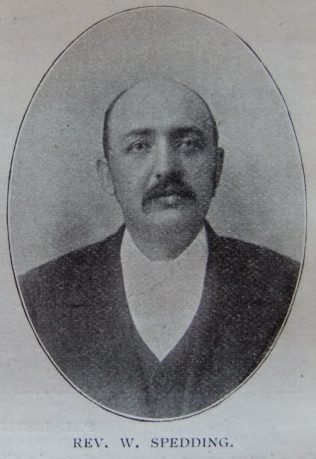

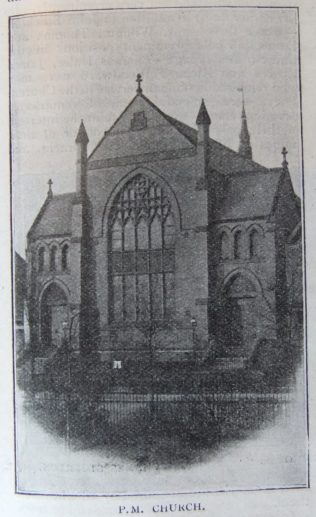
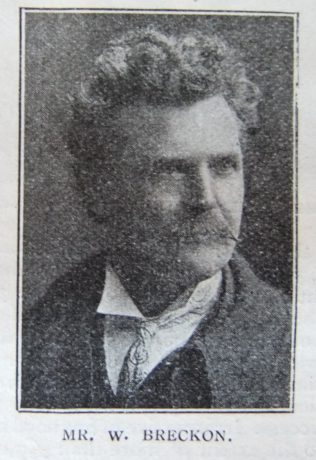

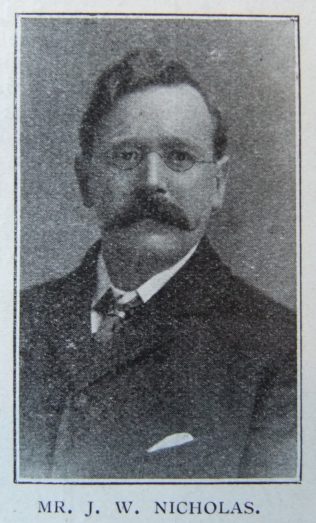
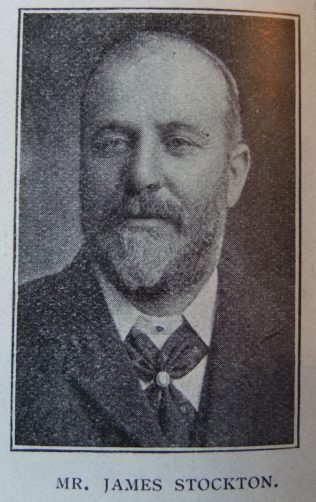
Transcription of Article in the Christian Messenger by William Spedding
The position of Primitive Methodism in Ellesmere Port is certainly unique, and one of which any Church may be legitimately proud. A few years ago the “Port,” as it is familiarly styled, was a mere hamlet on the upper reaches of the Mersey. To-day it numbers a population of 4,000 within the border of its Urban District Council. Within this area there are upwards of 1,000 Primitive Methodist adherents, and church property to the value of more than £10,000. The influence of Primitive Methodism on every side of public life within the radius aforenamed is undoubted and unequalled. In addition, its organisation includes all those institutions for the religious, educational and social necessities of the community which are characteristic of a well-ordered church, and even such as are rarely found in connection with the most advanced city churches. In fact, the whole of its ecclesiastical machinery is of the most modern and approved style. Without either hesitancy or exaggeration, Ellesmere Port may be described as a veritable stronghold of village Primitive Methodism, and as a rural church it holds a position which is, perhaps, not excelled by any other. With its splendid suite of premises, diversified agencies, and wide range of influence, it is an eloquent memorial to the intelligent loyalty, ceaseless activity, and unstinted generosity of its adherents towards the great objects of Christian aggression.
The story of its history, though brief, is remarkably interesting. There is nothing of great revivalistic upheaval or sensational episode to record, but simply a recital of patient, persistent and progressive work, with the gradual and permanent upbuilding of the Church. To begin at the beginning, it is necessary to retrace our steps at least fifty-seven years and to go back to the year 1847. It was in this year that the first Primitive Methodist service was held in Ellesmere Port, when the late Mr. John Stockton – who may be designated the pioneer of Primitive Methodism in the village – opened his house on Primrose Hill for a prayer meeting. Mr. Stockton was at that time a member of the little Primitive Methodist society in the hamlet of Pooltown, or Overpool as it was then called, about a mile away. By the way, Pooltown, we believe, was the mother of quite a number of local Primitive Methodist churches. Its services were held in a cottage uninterruptedly for more than eighty years, and Mrs. Lewis, the present occupant, and a long and faithful member of the Church, recalls with pleasure a visit from the venerable Hugh Bourne in the early days of the Church there.
Within the last three years a very pretty little chapel has been erected in the village.
To come back to the prayer meetings held in Mr. Stockton’s cottage. They were a great success, and very soon a society was formed, which rapidly grew both in numbers and influence. The exigencies of the growing Church demanded more space to begin with, and ultimately a large room, over a bakery in Church Street, was taken. The opening service was conducted by the Rev. James McPherson, who was then superintendent of the Chester Circuit, of which Ellesmere Port formed a part. In this room services were regularly held, with ever-increasing congregations, while there were added to the Church daily such as should be saved. It is needless to say that many happy memories are treasured, especially by the older members of the Church, of the many gracious visitations of God and never-to-be-forgotten spiritual services held in this upper room. The room over the bakery was a warm place in more senses than one, and not an infrequent sight was that of coatless men entering vigorously into the exercises of the service. But few members remain of these earlier days, and those who do now and again doubtless look with a measure of lingering affection upon the old room, and in fancy live over again many a hallowed scene within its walls.
While here, God graciously blessed the Church with increase; so much so, that it was again compelled to an enlargement of its border. In 1870, during the superintendency of the Rev. William Hall, it was decided to build a chapel to seat 350 persons, and at a cost of £1,760. Right worthily the Church responded to the occasion. The chapel was erected, and in 1872, as in the opening of the room over the bakery, the Rev. James McPherson preached the opening sermon. It was a red-letter day in local Primitive Methodism, and most people thought that a sufficient provision had then been made for the religious necessities of the place – well, for nearly all time. However, growth had evidently become the established law of the little community on all sides of its life. The development of local industry, notably that connected with the Shropshire Union Railway and Canal Company, resulted in a largely-augmented population, and the trustees deemed it prudent, a few years later than the opening of their chapel to build a suite of premises for day and Sunday school purposes. This was done at an additional cost of more than £1,000. At a still later date, a capital and modern infant school was added to the estate at an expenditure of £800. With the continuous growth of the village, the Church correspondingly developed; and the intervening years up to 1892 were characterised by great prosperity in all departments and relations of its work. So strong did the church locally become, that in the year named, under the superintendency of Dr. John Watson, Ellesmere Port was separated from Chester First and made the head of a new Circuit, with Whitby and Pooltown added. The Rev. William Whitham became its first superintendent minister, and every succeeding year has demonstrated the wisdom of the step then taken, and justified the formation of the Circuit.
Chester First has every reason to be proud of her offspring, and the robust type of Primitive Methodism which she thereby created. To come to days still more recent, the cutting of the great ship canal between Liverpool and Manchester along the left bank of the Mersey gave a big impetus to local trade, which, with the initiation of other and smaller Industries, brought a large number of workmen into the neighbourhood. Apart from the public-house, there was no local provision for many of the social requirements of these people. Hence, again taking time by the forelock, the idea was conceived to erect a Primitive Methodist Institute, with café, reading-room, recreation-room, parlour, gymnasium, etc. Under the direction of the Rev. John Atkinson this was accomplished at an outlay of £1,400, and opened in the year 1895. That it was both a wise and profitable venture, and that it has been a great boon, especially to the young men of the village, there cannot be the slightest doubt. The successive ministries of Rev. F. Pickering and Rev. R. Clemitson directed the Church not merely in labours abundant, but also to still larger ingatherings. Its advancement was continuous and emphatic. During the six years’ ministry of the Rev. T. Kynaston, the progress of the Church was very marked. The capacious chapel of 1872 had become far too small, and it was recognised that either a considerable enlargement of the premises must take place or that a new church must be built. The latter alternative was adopted, and in 1901 the present beautiful church was erected at a cost of £3,370. For the third time the opening service of a new venture was conducted by the late venerable James McPherson. It was amongst the closing services of his long, comprehensive ministry. The new church, capable of seating 700 persons, splendidly lighted and ventilated, with its terra cotta front, Gothic windows and luxurious internal furnishing, is one of the cheapest, most finely built, and prettiest in Primitive Methodism. The Primitive Methodists of Ellesmere Port are fond of their church, and very properly so, for one finer it would be very difficult to discover in any village community. If not exactly one of the wonders, it certainly always presents itself as one of the most pleasing surprises to visitors and newcomers. But even this most recent of forward movements has not been beyond immediate requirements, for there are very few vacant seats at the Sunday evening service, especially during the winter months. Best of all, there is associated therewith an active, vigorous Church, ever ready to move onward when the demands of the hour make the call. The old chapel is now used as a Central Hall, and is let for public meetings, concerts, etc., and is, in fact, the only public hall in the place, and consequently of great service. One of the most flourishing institutions of the Church is its day school, the largest in the village. This is very efficiently staffed with one head master, one head mistress (infant department), two assistant masters, and ten teachers. There are about 600 children on the register. For Sunday school purposes, the Central Hall, large school, infant school, with the numerous class-rooms, are all brought into requisition, so that the 370 Sunday scholars are admirably provided for. In this connection, it may be said that all phases of work among the young – Temperance, Christian Endeavour, literary – receive earnest attention, and are prosecuted with more or less success. Irrespective of financial indebtedness to the extent of more than £3,000 upon the trust estate, and the heavy burden thus involved, but few Churches are comparatively more loyal and generous to Connexional institutions and interests. While the average contribution per member last year to the Trust Fund alone was £3 3s. 5d., the average contribution per member to the Missionary Fund reached the commendable sum of 3s. 11½ d.
Reference to annual reports will show that every Connexional appeal receives sympathetic and generous response. But the charity of the Church begins at home, and their ministers are paid the most generous salaries in Primitive Methodism, and always when they are due, In fact, liberality in all matters religious is one of the most prominent features in this Cheshire village church. What of those who may be termed the makers of this Church? Of these very much might be said, and most eulogistically. There are some names which stand out very prominently. In the earlier days, in addition to John Stockton – whose three sons, William, Thomas and James, all hold prominent positions in Church and village – Thomas Hales, James Roscoe and Richard Woodward were men who rendered herculean service to the Church. They were splendid men, of remarkable devotion, energy and sacrifice in the interests of their beloved Zion. The odour of names is like unto precious ointment, and their memories are honoured by all who knew them.
In more recent days the name of the late John Pixton will occur to many. Mr. Pixton was a man of fine spirit, great personal gifts, and arduous Christian service, to whom the Church in Ellesmere Port confessedly owes very much. But if the Church bears impress of one man more than another, it is that of Mr. William Stockton, J.P., Circuit steward and Chairman of the Urban District Council. Mr. Stockton’s strong and comprehensive mind, exceedingly generous spirit and striking personality, are all more or less reflected in the prominent and progressive features of the Church’s life. But of him more anon. The official personnel of the Church is one of its strongest elements, and amongst those diligently and prominently in the van of its work are Mr. W. Breckon (twenty-seven years head master), Mr. Jas. Stockton (society steward), Mr. J.W. Nicholas (superintendent and choirmaster), Mr. T.H. Whitby (trustees‘ secretary and organist), etc. Three of these, Mr. Breckon, Mr. Nicholas, and Mr. Whitby, are members of the District Council, and are invariably associated with the larger social movements of the place. Great and encouraging as the history of our Church in Ellesmere Port undoubtedly has been, we believe there are before it still greater potentialities and wider spheres for aggressive service. Granted a continuance of that capable and devoted leadership which has characterised its past, the best days are yet to come.
WILLIAM SPEDDING.
References
Christian Messenger 1905/23





Comments about this page
As a family researcher, I find this article very interesting.
Thomas H Whitby and William Stockton are ancestors of mine and your wonderful description of them makes me proud and happy to be related to them. Thank you.
Add a comment about this page